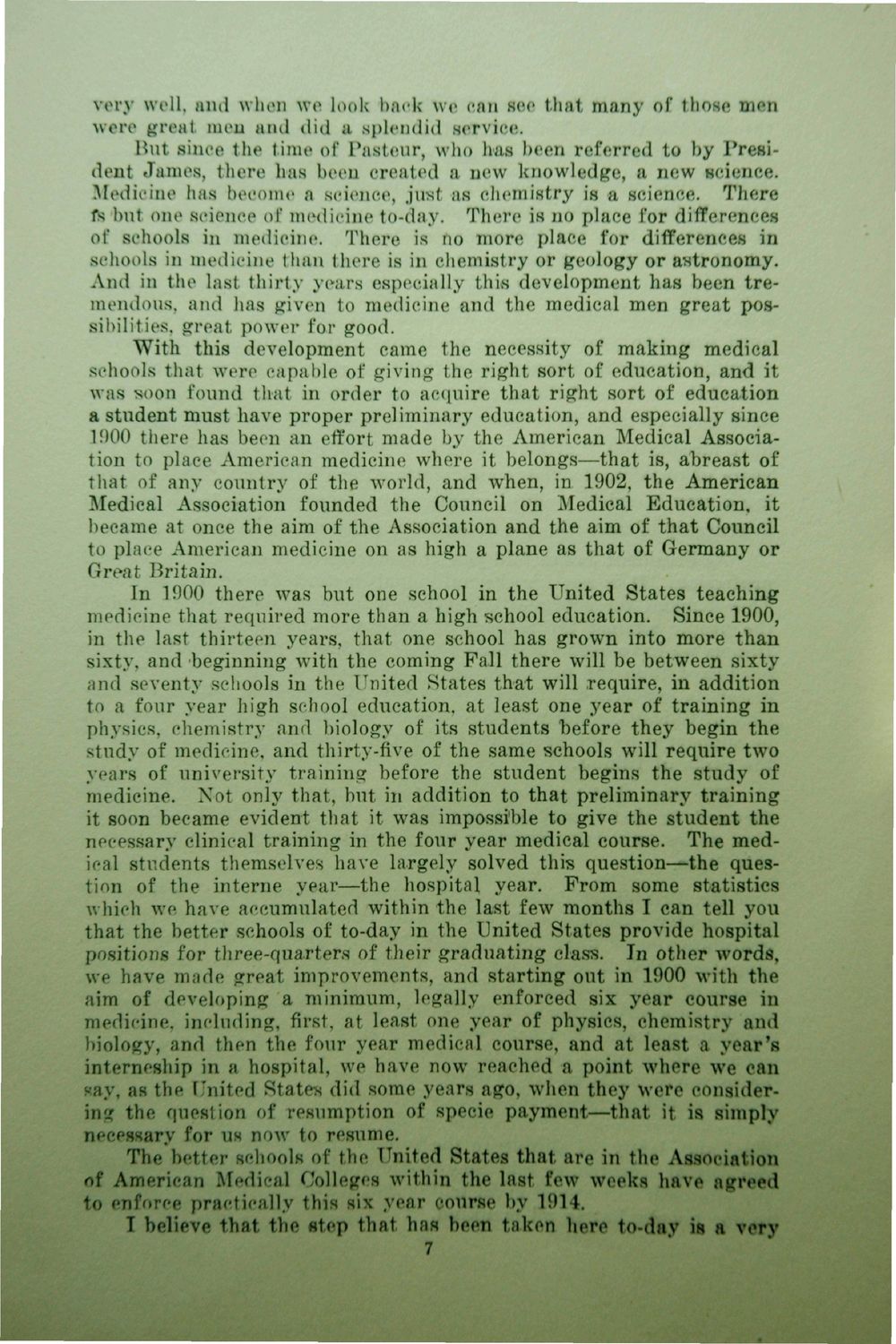| |
| |
Caption: Dedication - Chicago Medical Center Reopening
This is a reduced-resolution page image for fast online browsing.

EXTRACTED TEXT FROM PAGE:
very well, and when we look hack we can see that many of those men were great men and did a splendid service. But since the time of Pasteur, who has been referred to by President James, there has been created a new knowledge, a new science. Medicine has become a science, just as chemistry is a science. There ft; but one science of medicine to-day. There is no place for differences of schools in medicine. There is ho more place for differences in schools in medicine than there is in chemistry or geology or astronomy. And in the last thirty years especially this development has been tremendous, and has given to medicine and the medical men great possibilities, great power for good. With this development came the necessity of making medical schools that were capable of giving the right sort of education, and it was soon found that in order to acquire that right sort of education a student must have proper preliminary education, and especially since 1900 there has been an effort made by the American Medical Association to place American medicine where it belongs—that is, abreast of that of any country of the world, and when, in 1902, the American Medical Association founded the Council on Medical Education, it became at once the aim of the Association and the aim of that Council to place American medicine on as high a plane as that of Germany or Great Britain. In 1900 there was but one school in the United States teaching medicine that required more than a high school education. Since 1900, in the last thirteen years, that one school has grown into more than sixty, and beginning with the coming Fall there will be between sixty and seventy schools in the United States that will require, in addition to a four year high school education, at least one year of training in physics, chemistry and biology of its students before they begin the study of medicine, and thirty-five of the same schools will require two years of university training before the student begins the study of medicine. Not only that, but in addition to that preliminary training it soon became evident that it was impossible to give the student the necessary clinical training in the four year medical course. The medical students themselves have largely solved this question—the question of the interne year—the hospital year. Prom some statistics which we have accumulated within the last few months I can tell you that the better schools of to-day in the United States provide hospital positions for three-quarters of their graduating class. In other words, we have made great improvements, and starting out in 1900 with the aim of developing a minimum, legally enforced six year course in medicine, including, first, at least one year of physics, chemistry and biology, and then the four year medical course, and at least a year's interneship in a hospital, we have now reached a point where we can say, as the United States did some years ago, when they wete considering the question of resumption of specie payment—that it is simply necessary for us now to resume. The better schools of the United States that are in the Association of American Medical Colleges within the last few weeks have agreed to enforce practically this six year course by 1914. I believe that the step that has been taken here to-day is a very 7
| |